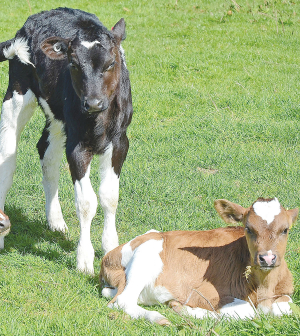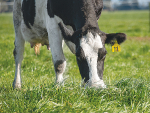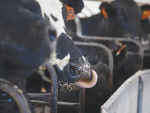There are two types of scours: nutritional and infectious.
Nutritional scours occurs when unclotted milk enters a calf’s small intestine due to stress, overfeeding or poor quality milk or milk replacer.
To prevent nutritional scours do not overfeed calves. Make diet changes slowly and use good quality milk/milk replacers.
Feed calves at the same time each day and by the same person. Consistency is the key to reducing stress.
Infectious scours can be caused by bacteria (E-Coli and salmonella), protozoa (coccidiosis and cryptosporidia) and viruses (coronavirus and rotavirus).
Consult your veterinarian when calves start scouring. The vet will have the scours diagnosed by laboratory analysis, rather than by scour colour, so that scours can be treated promptly and effectively.
The first treatment for both types of scours is similar. Remove calves from milk and feed them electrolytes. These will provide the calf with energy and water and replace body salts lost via scouring.
Provide calves eight litres of electrolyte daily in several small feeds. During scouring, calves may die from dehydration and lack of energy, but not from the scours themselves.
During serious infectious scours the vet may need to prescribe medication extra to electrolytes.
Coccidiosis, another prevalent disease, is caused by protozoa that destroy the finger-like villi in the small intestine that absorb nutrients.
The worst cases of coccidiosis will have bloody scours, but most calves won’t have any visible signs, they will just grow more slowly.
Calves going onto grass should be on clean pasture to keep their worm burden low.
De-worm them every three to four weeks from weaning to winter.
It is cheaper and easier to prevent disease than cure it, so biosecurity and hygiene are important.
Control the flow of people in and around the calf barn and only allow access to essential people. Keep visitors away from calf barns.
Have dedicated equipment for the calf barn and ensure that it is kept clean. This includes wearing clean clothing and boots.
Always wash hands with soap and warm water before and after handling calves, feed and feeding equipment.
Keep sick calves in a separate pen away from the others. Keep handy a safe, quality virucidal spray.
Locate the calf barn away from cows and dairy effluent. Cows can carry disease, and calves do not have the fully developed immune system of a cow so they will get sick more readily than cows.
• Source: CRT Calf Rearing Guide


















